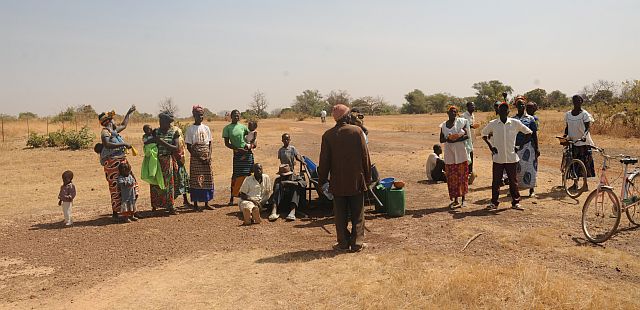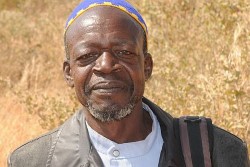 A dozen men (young and senior) are busy manipulating a hand propelled bunch pressure to make bundles under a heavy and burning sun. Long dry grass was harvested on a surface area of about 3 square meters was visible as well as 15 bundles laying one over the other. The elders looking for a shady area were discussing by some four big bundles of well tied long grass apart from the group.
A dozen men (young and senior) are busy manipulating a hand propelled bunch pressure to make bundles under a heavy and burning sun. Long dry grass was harvested on a surface area of about 3 square meters was visible as well as 15 bundles laying one over the other. The elders looking for a shady area were discussing by some four big bundles of well tied long grass apart from the group.

Nothing has been grown on this area before and the grass could hardly measure 25 cm on scattered surfaces during rainy seasons. The two hectares surrounded by the Drought Management pilot project are covered by long grasses that could reach in some parts 1,5m. This has been made possible, explains Hilaire Ilboudo coordinating the IDMP for Burkina CWP, “because during the dry season we brought a tractor to make scarification on very dry areas of the ground, other parts we had a mixture of technics like semi moon and zai. These technics are meant to transform dry flat lands to semi water reservoirs allowing micro-organisms to settle and populate to fertilize”.
The estimates are that between 1,500 to 2,000 bunches could be made from the grass harvested in the surrounded two hectares. At low price a bunch is sold between CFAF 500 to CFAF 750 and could double price (CFAF1,500) during some periods of the year. If the Kogoloweogo association keep their grass harvest to high demand time they could earn up to CFAF 2 million, an important sum of money.
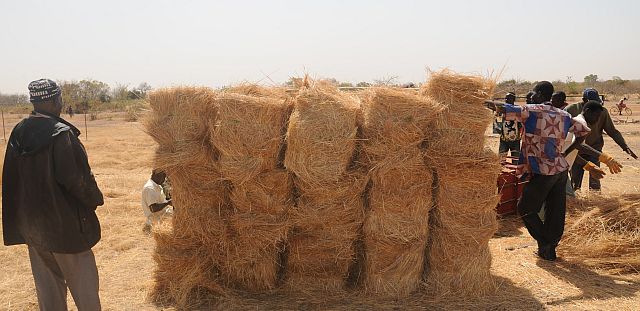
Nana Jean de Dieu, chief of the department of environment, green economy and climate change in Komki Ipala has followed and built the capacity of the Kogoloweogo members during the project implementation on soil restoration, water conservation. He explains that the difference is very big between the area surrounded and outside this area. “This is a good example for us to scale up in the commune since there is no doubt about the ownership the populations have made of the results of this action”, says Mr. Nana.
Ouedraogo Souleymane, chief of the social action of the Ministry of women, national solidarity and family played a role of smoothing any difficulties that could arise during the implementation of the project. The project has involved the mayor, the prefect, the departments of Agriculture, of environment and the village development committee of Komki Ipala.
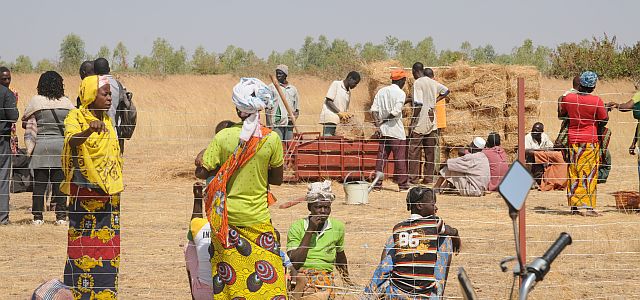
Burkina Faso, a Sahelian country, is facing a massive deterioration of its biodiversity due to drought. Since the 1970s efforts have been made by the Government, NGOs and civil society in the fight against drought. Despite these efforts, about 4 million of Burkinabè remain exposed to the aliases of the phenomenon of drought. The analysis of the review of initiatives in the field of drought showed that in Burkina Faso, actions aimed at combating drought were essentially conservation actions to the detriment of restoration ones. Moreover, the different reforestation organized each year by various institutions showed their limits because of the non-follow-up of the young trees planted. Thus, new innovative approaches are born such as the technique of defence of the soil.

This project is an integration of several agro-sylvo-pastoral practices in order to be innovative in the reforestation. Indeed, the classic reforestation model has shown its limits. In view of the degradation of the environment, ways must be found to restore nature and to combat drought.
The pilot project is implemented in a participatory way with the strong involvement of local actors. It has been a school where all the local actors, the beneficiaries, the students came to learn and to take inspiration. From the construction of the holes through the installation of the posts, the designing of the fence, the digging of the ponds, the digging of the trench of the live hedge, the scarification of the ground, etc. everything was done by the beneficiaries assisted by residents. The beneficiaries themselves carried out the nursery work to produce 8,000 plants, 3,000 of which were then used to reforest the site.

Customary Authorities, Village Development Committee, Town Council, decentralized services (agriculture, environment) of komki Ipala are involved in the implementation of the project.
Major outcomes
In terms of results achieved, we can mention:
- The Kogoloweogo group members and especially the landowner who made available his land of 2 ha for the needs of the project are totally convinced to push actions forward and scale up in their own lands. The project has created a strong attraction in the population willing to learn about the techniques used to recover the degraded land and restore vegetation;
- the local political authorities including the mayor and the deconcentrated services of komki Ipala have supported the project giving more smile and pride to the project beneficiaries;
- two (2) hectares of degraded land have been recovered and protected and can served other purposes to generate revenues for the group mainly through the sale of bunches produced on the site; the regrowth of the herbaceous state allowing for the reforestation;
- the capacity of the beneficiaries are built (training of beneficiaries, sensitization of actors, study trip) on recovery techniques and practices that respect the environment.
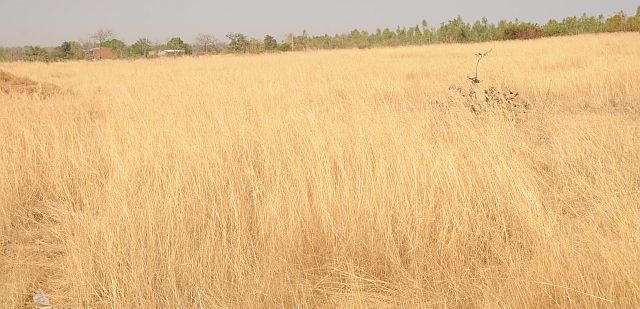
Main lessons learnt
Implementation of the IDMP pilot project yielded lessons and recommendations for the implementation of a similar project:
- The involvement of customary, administrative and technical authorities to think the project through before will facilitate better implementation and any readjustment with the beneficiaries;
- The valuation of local knowledge makes it possible to develop projects that are adapted to the needs of riparian and beneficiary populations with concrete and visible impacts;
- Sharing experience between the new beneficiaries and the elders makes it possible to create a framework for exchanges in order to break the last resistances and facilitate the conviction of achieving a probable success.
